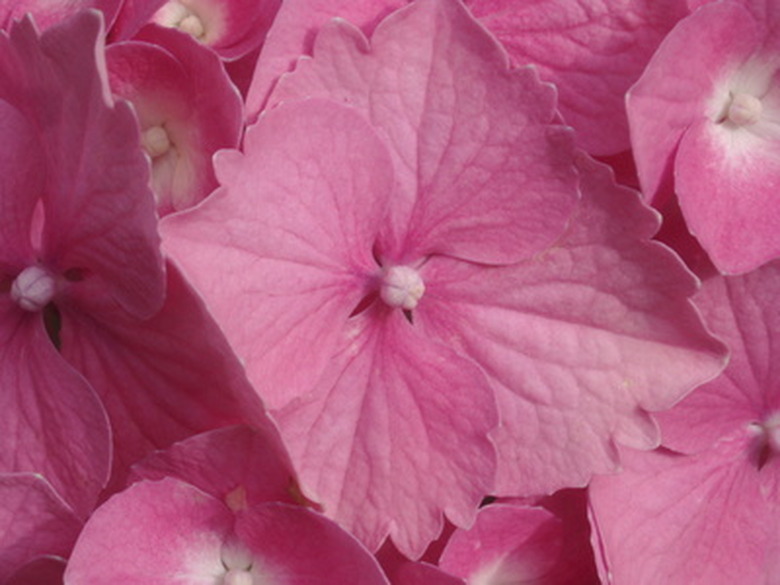Hydrangeas With Problems
There are 23 species of the perennial bush hydrangeas, including deciduous and evergreen varieties. The hydrangea can be a shrub, vine or even a small tree, all with profuse heads of huge, round summer flowers of white, pink, lilac, purple and blue, all in varying shades. Most hydrangeas grow from 3 to 5 feet tall, but some can reach heights of 25 feet. While the hydrangea is relatively pest free, problems can arise without proper care and maintenance.
Hydrangea Disease Problems
Powdery mildew can cause problems for bigleaf hydrangeas that are planted in shaded high humidity areas. It rarely kills the plant, but causes purple splotches on the leaves, and covers them in a light gray powder. If the hydrangea looks wilted and does not perk up when watered, the cause is usually Armillaria root rot. Oakleaf hydrangeas are particularly susceptible, especially those planted in poorly-drained soils. Fungal leaf spot can also attack hydrangeas, usually in the late summer and early fall. Leaf spot can attack all species of hydrangea, especially those planted in the full sun. A purple halo will appear on the leaf on the fungal infested plant, surrounding a brownish gray lesion. Although not fatal to the plant, it will detract from its beauty. The smooth hydrangea is also susceptible to disease. Rust shows as orange spots on the back of leaves. When rubbed, spores of fungus will be released in an orange dust. Rust usually affects hydrangea in the fall.
- There are 23 species of the perennial bush hydrangeas, including deciduous and evergreen varieties.
- If the hydrangea looks wilted and does not perk up when watered, the cause is usually Armillaria root rot.
Hydrangea Insect Problems
Aphids, Japanese beetles and mites can all attack the new growth of hydrangeas, although rarely to insect pest infestations become severe enough to warrant the use of an insecticide. While most species of hydrangea are not bothered by the Japanese beetle, it will feed on the oakleaf hydrangea. Ants crawling on the hydrangea usually mean an aphid problem. Aphids excrete sticky honeydew that the ants feed on. As the new plant growth matures over the summer, the leaves become tougher and the small green insect problem tends to disappear. Webbing between the new leaves of the hydrangea are the early indications of spider mites. The tiny mites can't be seen by the naked eye, but they can cause big problems, distorting growth of the hydrangea. Make sure the hydrangea gets plenty of water during hot, dry weather to keep mites from becoming a problem.
- Aphids, Japanese beetles and mites can all attack the new growth of hydrangeas, although rarely to insect pest infestations become severe enough to warrant the use of an insecticide.
Hydrangea Problems caused by Climate and Soil
Excessively high pH in the soil can cause iron chlorosis in new leaf growth of the bigleaf hydrangea. Lowering soil pH with applications of aluminum sulfate or organic materials will correct the problem by allowing iron to become available in the soil. Too much shade can prevent some hydrangeas from blooming. A reliable bloomer may suddenly be a blooming disappointment if a new structure, or even nearby tree growth puts the hydrangea in the shade. The plant can easily be moved to a sunnier spot. If the temperatures suddenly drop after the hydrangea has budded in the spring, or before the plant has gone dormant in the fall, the cold temperature may affect the hydrangeas' ability to bloom.
